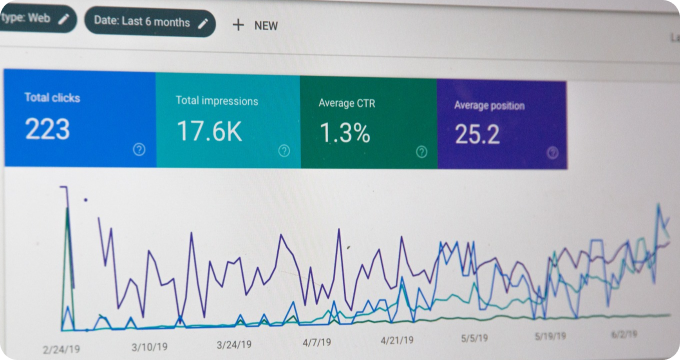What are Licensing Management Software Systems and How Do They Work?
- October 19, 2023
- 3 minutes
In the expansive universe of software, an often overlooked yet crucial component is Licensing Management Software Systems (LMSS). These systems, akin to the unassuming backstage crew of a Broadway production, subtly yet significantly contribute to the drama and coherence of the play unfolding before us.
LMSS, as the name suggests, is software designed to manage and safeguard the licenses of other software applications within an organization's IT environment. The sheer volume of software that modern businesses depend on, coupled with the labyrinthine array of licenses required to lawfully operate these applications, has fostered the emergence of LMSS as an essential tool.
This post aims to shed some light on the intricate mechanism of LMSS, scrutinizing its mechanics and breaking down its relevance to modern businesses. The aim is to foster a comprehensive understanding of this vital piece in the IT infrastructure puzzle.
The essence of LMSS can be understood through the conceptual framework of an information system. The software serves as a medium to collect, process, store, and distribute information related to software licenses. In the course of its operation, LMSS interacts with various components of an organization's IT infrastructure, including databases, servers, and other software applications.
At its core, the primary function of LMSS is to keep track of the licenses owned and used by a company. This entails recording the number of licenses purchased, the number of licenses currently in use, and the remaining licenses available. The software also logs the expiry date of each license and sends reminders for renewal when necessary. In addition, LMSS is also programmed to monitor software usage and ensure that the company doesn't exceed the number of allowed installations or users.
The value proposition of LMSS can be analyzed through a socio-economic lens. At a microeconomic level, the software helps organizations maintain legal compliance, thereby averting hefty fines and reputational damage that could result from license violations. Furthermore, by providing insights into software usage, LMSS allows businesses to optimize their expenditure on software licenses. This is akin to applying the principles of economic efficiency to IT management, minimizing waste and maximizing utility.
From a sociological perspective, LMSS can be seen as a component in the broader trend of digitalization and automation, which has penetrated all aspects of modern enterprises. It represents one more step towards the goal of automating routine administrative tasks, freeing up human resources for more strategic and creative tasks.
The operation of LMSS can be depicted as a cyclic process comprising four main stages: data collection, data processing, data storage, and data distribution. The system first collects data about software licenses from various sources, such as purchase records and user logs. This data is then processed to generate meaningful information like the number of unused licenses or upcoming renewals. The processed data is stored in a database for future reference and distributed to relevant stakeholders through reports, dashboards, or notifications.
The interplay between LMSS and other IT components can be viewed through the lens of systems theory. LMSS can be seen as a subsystem within the larger system of the organization's IT infrastructure. It interacts with other subsystems like the company's databases or servers, exchanging information and influencing each other's state. These interdependencies form a complex web of interactions that shape the behavior of the overall system.
Despite its numerous benefits, LMSS is not devoid of trade-offs. For instance, implementing LMSS requires a significant upfront investment in terms of cost and time. The system also needs to be regularly updated to keep up with changes in licensing terms and software usage patterns. Moreover, the effectiveness of LMSS hinges on the accuracy of data input, which can be compromised by human error or technical glitches.
In conclusion, while LMSS might not have the glamour of artificial intelligence or the novelty of blockchain, its importance in the modern IT landscape is undeniable. Its role in helping organizations navigate the intricate maze of software licenses, while also optimizing resources and ensuring compliance, makes it an invaluable asset in the IT arsenal. Through LMSS, the backstage crew ensures the play proceeds without a hitch, contributing to the grand spectacle that is modern business.
Learn More
Unleash the potential of your business by diving deeper into our blog posts and discover the transformative power of licensing management software. For an unbiased, comprehensive view, they should not miss the opportunity to explore our rankings of Top Licensing Management Software.
Popular Posts
-
 Licensing Management Software Industry Report: Unveiling Key Findings and Crucial Insights
Licensing Management Software Industry Report: Unveiling Key Findings and Crucial Insights
-
 How to Strategically Budget for Licensing Management Software in Your Business
How to Strategically Budget for Licensing Management Software in Your Business
-
 6 Things I Wish I'd Known About Licensing Management Software Before Implementing One
6 Things I Wish I'd Known About Licensing Management Software Before Implementing One
-
 How to Hire the Right Licensing Management Software Provider
How to Hire the Right Licensing Management Software Provider
-
 Ask These Questions to a Licensing Management Software Provider to Choose the Right One for Your Business
Ask These Questions to a Licensing Management Software Provider to Choose the Right One for Your Business






